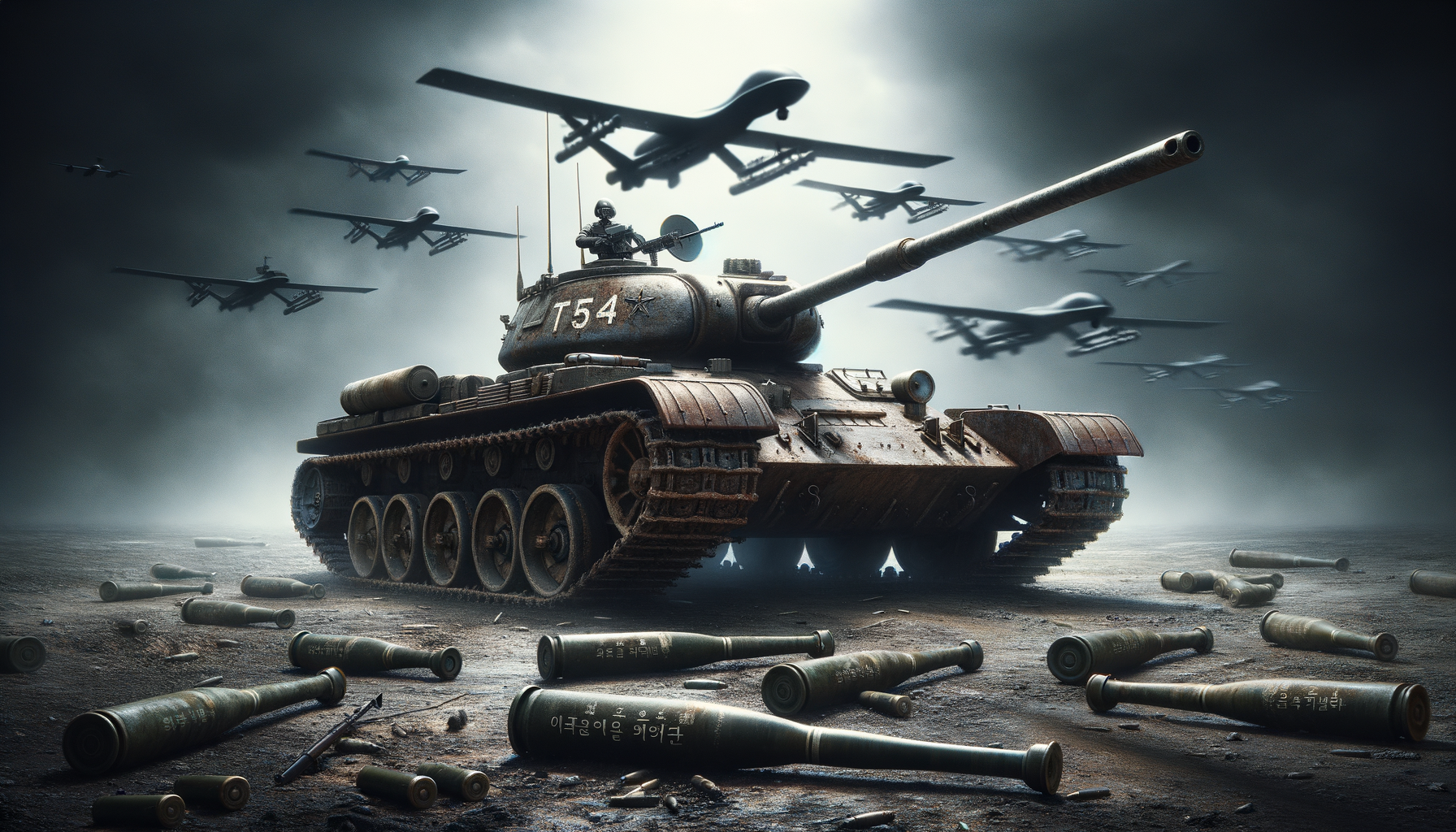Rusty Tanks, Korean Shells and a Shrinking Stockpile
Is the Kremlin suddenly in an unknown weapons crisis?
Short answer: The shortage is real, but it’s not new and far from the secret collapse some headlines suggest.
Keep reading to see the surprising numbers, the creaking Soviet gear rolling out of depots, and the risky foreign lifeline that could yet backfire on Vladimir Putin.
The Eye-Catcher: A 70-Year-Old Tank Rumbles Past Kyiv’s Drones
Late last autumn, Ukrainian quad-copters filmed a Russian T-54 tank—first built when Elvis topped the charts—trundling into battle. The images went viral, framed as proof Moscow was “out of tanks.” Yet satellite analysts at the International Institute for Strategic Studies (IISS) say Russia still refurbished or produced over 1,500 newer tanks in 2024 alone.
So which picture is true: the museum pieces on the frontline or the factories still coughing out armour? The answer lies in a tug of war between shrinking stockpiles and an industrial machine racing to keep up.
What the Sensational Teaser Claimed vs. What We Verified
| BILD-plus Teaser | Fact-Check Finding | Evidence |
|---|---|---|
| “A previously unknown crisis” | False – problems flagged since 2022 | ISW, IISS, CSIS, Reuters all documented shortages two years ago. |
| “Exact number of repaired weapons revealed” | Exaggerated – estimates vary wildly | ISW: 250-300 tanks/year; IISS: 1,500+ refurbished or built in 2024. No single official figure. |
| “Putin has a huge problem with war supplies” | True but nuanced | Shell consumption (≈12 m in 2022) > output (≈3 m/yr). Cannon-barrel bottlenecks, dwindling best-quality stocks. |
| “He resorts to an extremely risky strategy” | Partly true | Relies on 1950s–70s armour, cannibalising depots, and North Korean shells. Risks are political, logistical—yet so far sustainable. |
Inside the Numbers: Russia’s Balancing Act
-
Artillery Math
• About 3 million rounds produced domestically in 2024 (Foreign Policy).
• Roughly 250,000 t of ammo shipped from North Korea the same year (Financial Times).
• Estimated 12 million rounds fired in 2022 alone. Consumption still outstrips supply. -
Tank Fleet
• Pre-war reserve: ~10,000 vehicles in storage.
• 47 % still in storage as of Dec 2024 (sat-imagery study).
• Production + refurbishment 2024: 1,500 tanks, 2,800 IFVs/APCs (IISS). -
The Bottle-Necks
• Only two rotary forges in Russia can make large gun barrels—hard to scale quickly.
• Chronic shortages in ball bearings, optics and microchips due to sanctions (Tagesspiegel, Foreign Policy).
Story Behind the Stats: From Cannibalised Depots to Korean Lifelines
Picture a railway siding in Russia’s Far East. Under tarpaulins sit containers fresh off a North Korean freighter—each one packed with 152 mm shells. Officials call it “material-technical support,” but Western diplomats brand it a sanctions breach. Either way, Moscow is leaning on Pyongyang for the heavy metal it can’t mill fast enough at home.
Shift west to a storage base in Ural mountains: mechanics strip two derelict T-62s to resuscitate one “Franken-tank” fit for the Donbas. It’s cheaper than building a new T-90M, but every cannibalised hull means one less reserve for tomorrow.
These snapshots show the risky strategy in action—not a dramatic collapse, but a slow burn on inventories that once seemed endless.
What Keeps the Kremlin Afloat (For Now)
• Sheer Scale of Soviet Legacy – Even after heavy losses, Russia retains thousands of armoured vehicles and millions of older shells.
• Expanding Production Lines – A new high-explosives plant at Biysk is slated to open in 2025 (Reuters).
• Foreign Sourcing – Beyond North Korea, Iran supplies drones and possibly ammunition components.
Result: Most analysts believe Russia can fight at current intensity into 2025–26—hardly a lights-out scenario, but an expensive treadmill.
Why the “Unknown Crisis” Narrative Persists
- Lack of Official Data – Russia classifies repair and production figures, letting speculative numbers flourish.
- Pictures Are Persuasive – Viral clips of ancient tanks overshadow spreadsheets showing modern output.
- Media Incentives – “Secret crisis” sells subscriptions faster than “incremental attrition.”
What We Still Don’t Know
- Exact stock levels of critical components (gun barrels, explosives).
- Quality and dud-rate of imported North Korean shells.
- Whether Western sanctions will choke off micro-electronics faster than Russia can smuggle replacements.
We will keep tracking satellite imagery, customs manifests and leaked procurement papers to close those gaps.
Bottom Line
Yes, Putin’s army faces a mounting logistics headache. No, it wasn’t unearthed by a single “new” analysis, and Russia is not on the brink of running out of guns tomorrow. The real story is a slower grind: rusty armour, foreign lifelines and factories working overtime—none of it fatal yet, all of it costly later.
Stay tuned. The moment shortages outpace these work-arounds, we’ll be the first to tell you—minus the melodrama.
Sources linked above: ISW, IISS, Foreign Policy, Financial Times, Reuters, Tagesspiegel.
